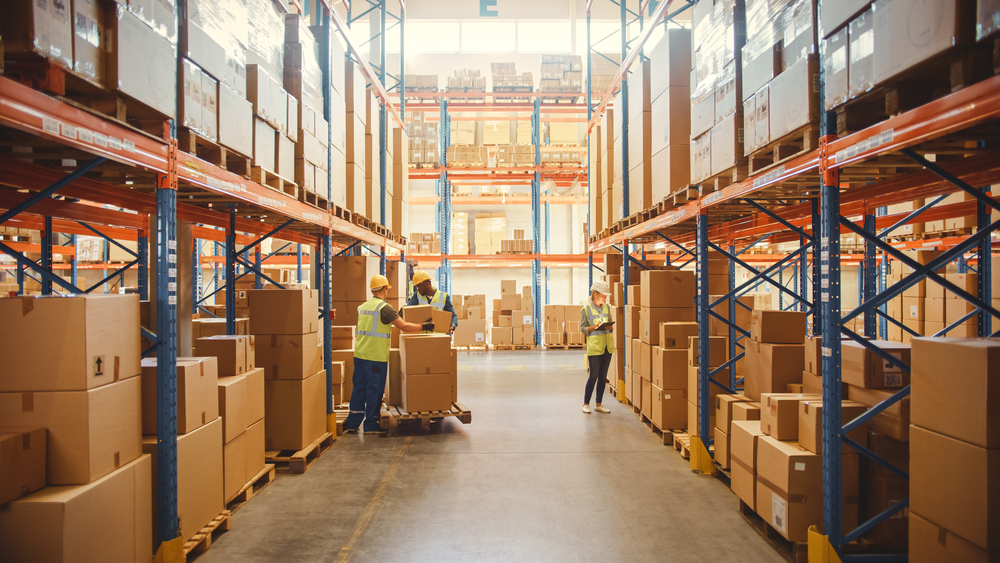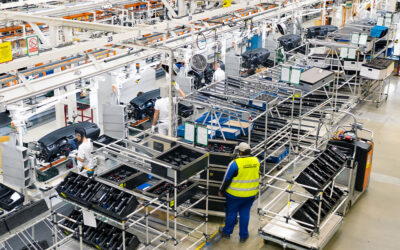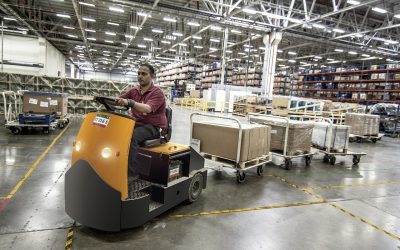Packaging serves a multi-faceted role within the manufacturing and logistics industries. Beyond its primary function of protecting parts, the choice of packaging material, design, and process has far-reaching implications for cost, sustainability, and overall operational efficiency.
Let’s explore some key characteristics of a lean packaging and handling process, highlighting how purposeful packaging and material flow can save your business serious overhead.
How to Improve Packaging Efficiency
Effective packaging is more than just putting items in boxes; it’s a key component of the supply chain that impacts everything from profitability to environmental sustainability. Thus, it’s important to find efficiencies where you can.
Typical Requirements for Effective & Efficient Packaging
Let’s start with some basics. You might already be familiar with these principles and try to practice them as much as possible in your everyday. Even so, we’ll recap.
In typical order of priority, these are the top characteristics many businesses “grade” their packaging operations on:
- Cost (the lower, the better, of course) necessitates choices about things like sizing, part density, and materials.
- Part protection, which involves cushioning or padding to protect fragile components.
- Part density can affect the total packaging and handling program cost.
- Sustainability necessitates choices about things like eco-friendly materials and waste reduction.
Often Overlooked: 5 Packaging & Handling Improvement Ideas
Now, let’s focus on some of the commonly overlooked packaging problems and how to resolve them. While you may have thought about these concepts before, you might not realize how much of an impact they can make.
1. Reduce overhandling
Every time a product is handled, there’s a potential for damage. Reducing the number of times a product is handled throughout the supply chain can significantly improve packaging efficiency.
Consider this a key factor when designing your package. Focusing on part density alone, such as bulk packing, can often lead to product damage, additional sorting, poor ergonomics, repacking, and, in short, “overhandling.”
2. Minimize waste at the point of use
“Point of use” is the concept in which all supplies are positioned at arm’s length in front of the operator and in the sequence in which they are “used,” or handled. The right design will minimize the need to remove secondary packaging (bags, foam, tape, etc.).
Reducing waste at this stage involves ensuring that parts are easy and efficient to handle without creating unnecessary mess or litter.
3. Ensure good presentation at the point of use
Efficient packaging must consider the ergonomics of handling by operators who will both load and unload the pack. Will the packaging be placed on a lineside flow rack? Can it be presented better to the user? Think about how easy it is to access the product and the work the people will have to do who are ultimately using the packaging.
Too many times, saving money on the package costs creates more labor throughout the pack and pick process. Clear labeling, uncomplicated positioning, and logical organization should also be considered to save time and improve the overall handling process.
4. Try sequenced delivery/kitting
For businesses that rely on just-in-time production, sequenced delivery and kitting are crucial. Ensure that products are categorized in the order they’ll be assembled or packaged, reducing the need for additional handling and sorting at the assembly line.
Moving to a kit pack or cart can also be a great way to minimize inventory in the work cell and save space.
5. Try “no packaging” kit carts
For certain materials, it may be feasible to eliminate traditional packaging altogether. “No packaging” kit carts are an innovative solution that can reduce waste and costs while maintaining part protection throughout your process. Improve ergonomics and efficiency, and further error-proof your process with kitting.
Looking Past Packaging: Ideas for Better Material Flow
How you get objects from Point A to Point B is just as important of a consideration as the materials and ergonomics associated with them. This next section provides an emphasis on the handling aspect of “packaging and handling,” with some tips on how to improve material flow throughout your facility.
Count the Number of Touches Along Your Product Packaging Lifecycle
Reducing the number of touchpoints along the lifecycle of a product and its packaging is essential for efficiency and sustainability. Count how many touches your current product lifecycle involves as it travels through the process from receipt to point of use. This is the first step in making progress toward improvement.
Map Out a More Efficient Route
Next, find ways to reduce handling touchpoints or at least make the route more streamlined. Which steps should be removed? Are there any steps that can be combined? Are there any that need to be added? Achieving balance comes from considering all users through the lifecycle.
If you’re struggling to find opportunities for optimization, you may consider reaching out to a lean manufacturing consultant who can help. They’ll have insider knowledge about what’s worked for others and how any of those practices could be implemented at your facility.
Consider Alternate Transportation Methods
Choosing the right methods of transportation within your warehouse or production facility is critical for optimizing material flow. Selecting the most appropriate transport solutions can enhance efficiency and reduce costs.
Of course, conveyor belts and automated systems are highly popular choices. However, the cost of these solutions can be overwhelming. They also take quite some time to build and configure — and in the manufacturing world, we all know that time = money as well.
Some transportation options that don’t have a significant upfront cost or lead time are:
- Hand carts, which are simple and cost-effective for smaller loads.
- Kit carts, which are ideal for pre-packaged materials ready for use.
- Tug carts, which are efficient for moving larger quantities of materials.
- Forklift bulk containers, which are suitable for heavy or bulky items.
Get More Packaging & Material Flow Tips from Our Lean Manufacturing Experts
We’re a world leader in lean implementation, passionate about improving people, processes, and products to help manufacturers like you thrive. So far, we’ve helped hundreds of organizations achieve time and cost savings, and we’d love to help you too.
Give us a call at (313) 859-9780 or contact us online to get started.



